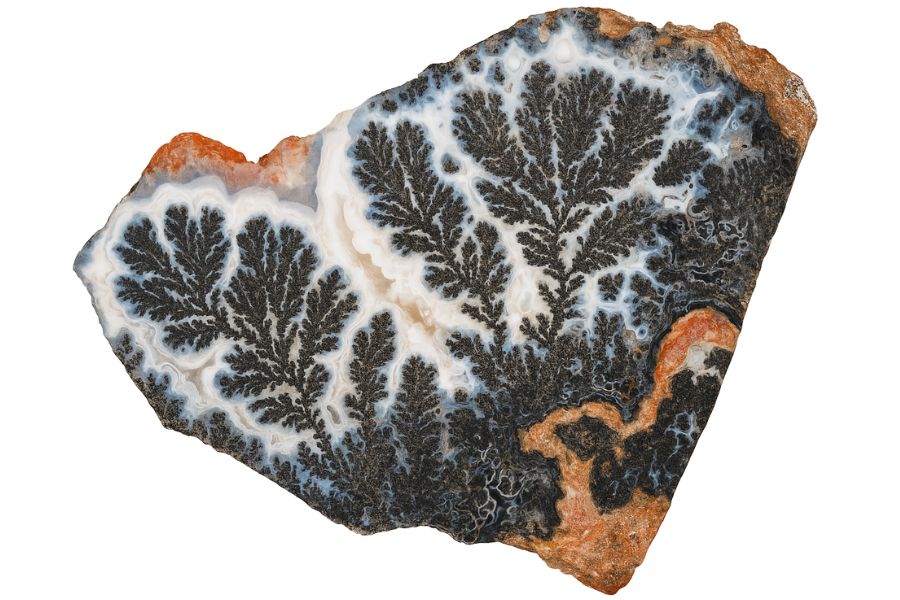Looking for agates in Wyoming takes you through some of the most striking landscapes in the West. Collectors love the state’s moss and plume varieties, which show off fine details formed deep in the earth.
Loose stones often turn up in river gravels or along the slopes of mesas where erosion has done the work for you. It’s the kind of hunt that keeps you scanning the ground, never sure when the next colorful piece will catch your eye.
A little research into the state’s most productive regions can make your search much more successful. Each location offers its own kind of challenge!
However, with a bit of preparation, you can come away with a bright, varied collection of Wyoming agates worth showing off.
What is Wyoming Agate?

Agate is a beautiful microcrystalline quartz known for its striking patterns and bright colors, ranging from earthy browns and reds to ethereal blues and greens. These semiprecious stones often have concentric rings or complicated shapes like a tree’s growth rings.
These layers build on top of each other, and the colors and patterns of agate come from the different impurities or minerals present during each phase. It’s a slow, painstaking process, but in the end, Mother Nature has made a beautiful, one-of-a-kind masterpiece.
Most of the time, they’re found in places where volcanoes have erupted in the past or in old river beds where water has worn away rocks to reveal these hidden gems.
We wrote an article about how much agates are worth so you can learn more.
Blue Lace Agate
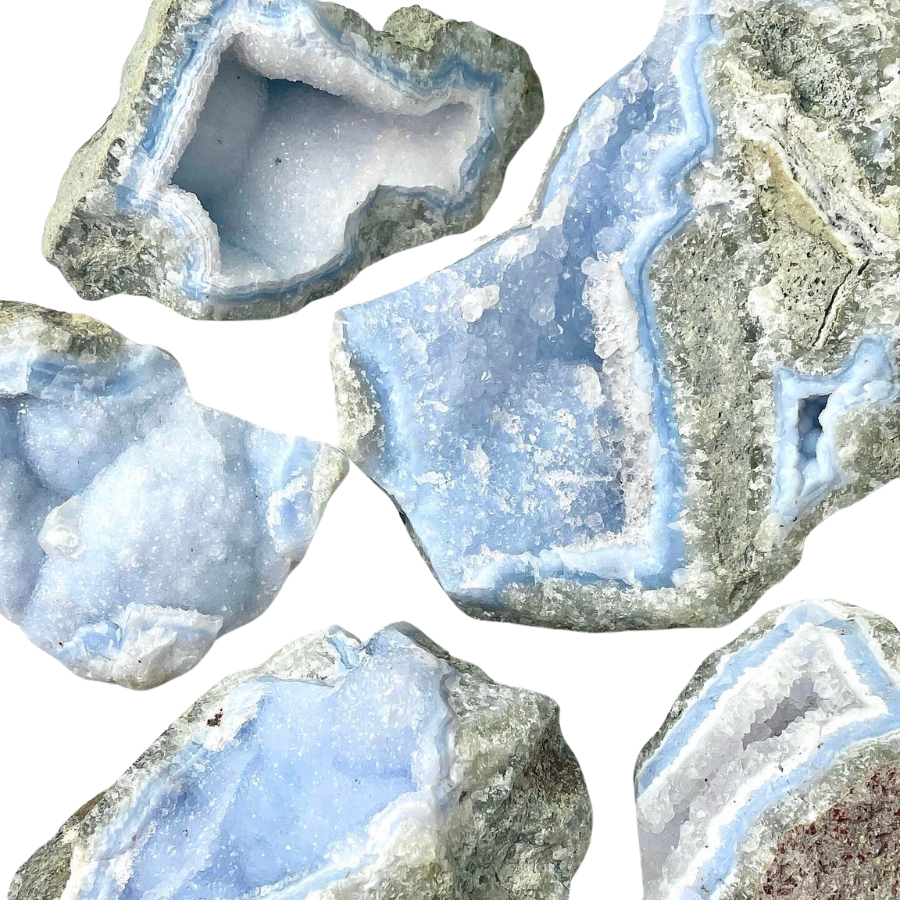
Blue lace agate is like the soft, sky-blue waves with lines that swirl and twist like delicate lace.
Its pattern comes from slow-forming layers of quartz, which create those beautiful, lace-like bands.
The bands of this agate type are often in shades of light blue, white, and sometimes a bit of grey. It’s different from other agates, which usually have more intense colors and stronger patterns.
The value of blue lace agate lies in its soft, tranquil look and the feeling of calm it brings. It’s often used in jewelry or as a decorative stone.
If you want REAL results finding incredible rocks and minerals you need one of these 👇👇👇
Finding the coolest rocks in isn’t luck, it's knowing what to look for. Thousands of your fellow rock hunters are already carrying Rock Chasing field guides. Maybe it's time you joined the community.
Lightweight, mud-proof, and packed with clear photos, it’s become the go-to tool for anyone interested discovering what’s hidden under our red dirt and what they've already found.
Join them, and make your next rockhounding trip actually pay off.
What makes it different:
- 📍 Find and identify 140 incredible crystals, rocks, gemstones, minerals, and geodes across the USA
- 🚙 Field-tested across America's rivers, ranchlands, mountains, and roadcuts
- 📘 Heavy duty laminated pages resist dust, sweat, and water
- 🧠 Zero fluff — just clear visuals and straight-to-the-point info
- ⭐ Rated 4.8★ by real collectors who actually use it in the field
Moss Agate

Instead of having the typical banding for which the different types of agates are known, moss agate has green inclusions that look like moss or trees.
These green patterns aren’t real plant material, though. They’re minerals like chlorite or iron oxide.
In some cultures, this type of agate is known as the “gardener’s stone” because of its green, plant-like appearance. It’s believed to help plants grow.
The price of moss agate can vary. It’s often quite affordable, but the more distinct and picturesque the green patterns, the more it might cost.
Fire Agate
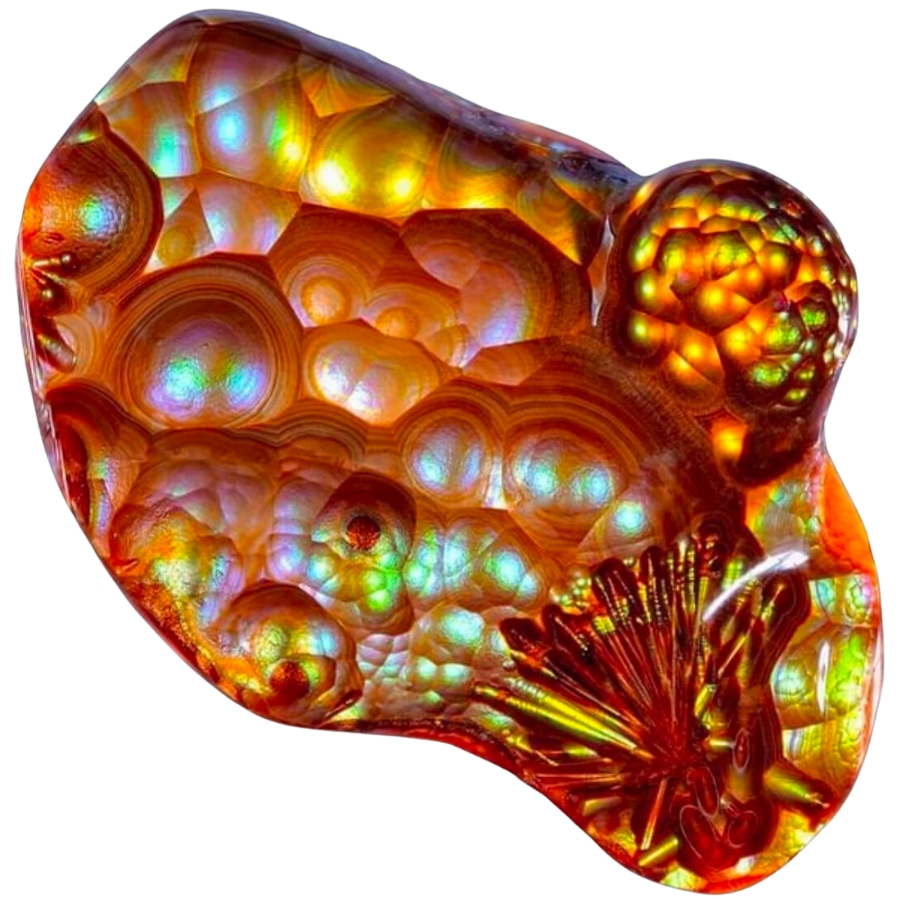
Fire agate is known for its incredible colors and the way it sparkles like fire. It’s got layers of silica and iron oxide that reflect light, creating a fiery effect.
When you look at fire agate, it’s like seeing flames trapped inside. Its colors can range from reds and oranges to greens and golds, all shimmering under the surface.
You might be wondering, “What is fire agate worth?” Well, its value comes from its rare beauty. The more color and sparkle, the more valuable the stone is.
Its fiery iridescence and lively play of color are used in jewelry pieces that are meant to stand out.
Dendritic Agate
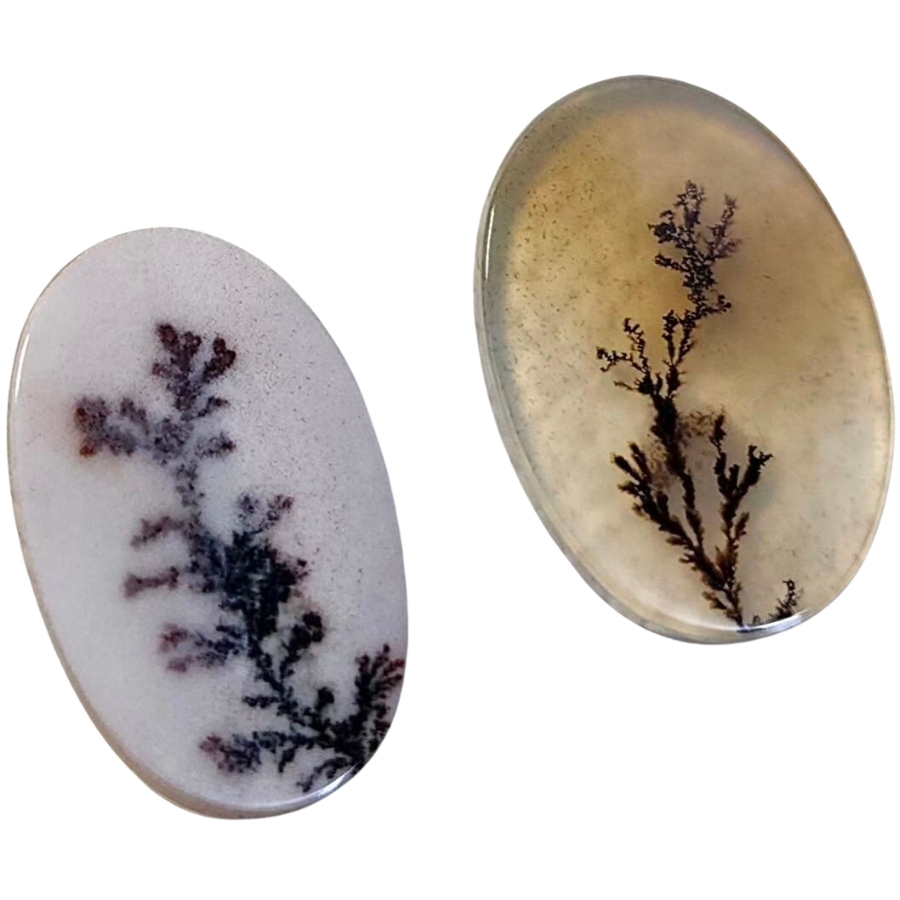
Dendritic agate is known for patterns that look like tiny trees or shrubs. Like moss agate, these patterns aren’t actual plants. They’re made of minerals, mostly manganese or iron oxides.
When you look at a dendritic agate, it’s like peering into a miniature forest or a frosty winter landscape.
The base of the stone is usually translucent to opaque, and the “dendrites”— those tree-like patterns— are often black or brown.
When it comes to how much dendritic agate is worth, it can vary. The more detailed and distinct the patterns are, the more it’s usually valued.
In some cultures, dendritic agate is believed to bring fullness and richness to life.
Crazy Lace Agate
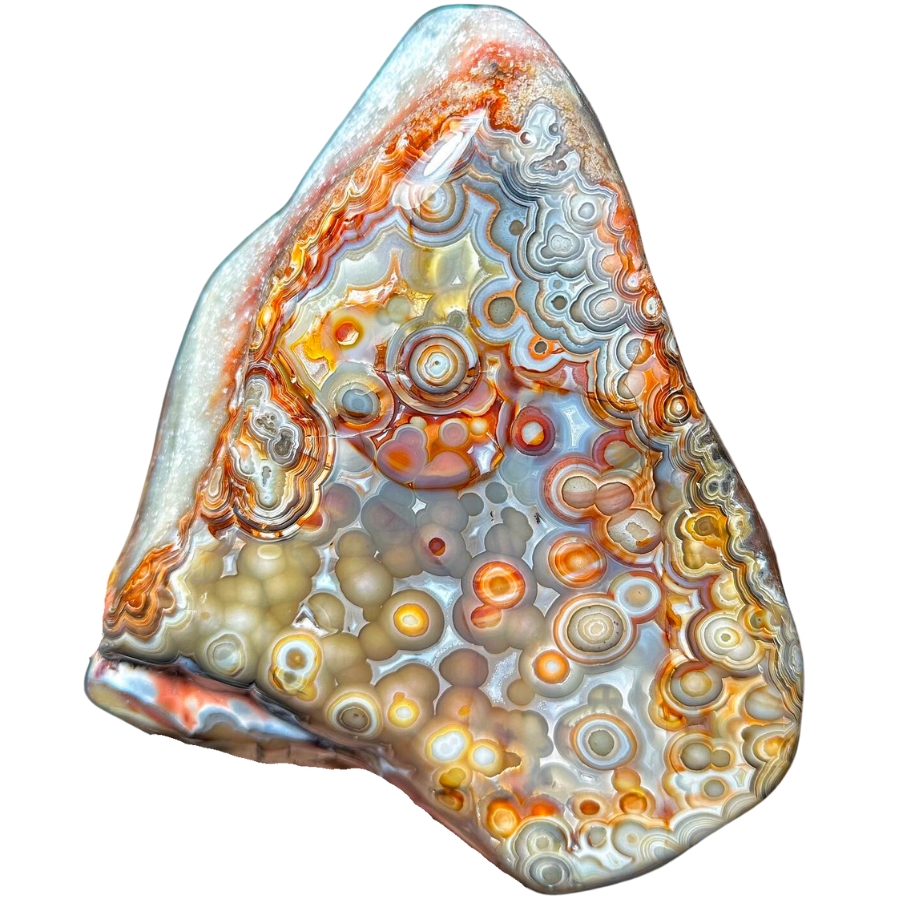
Crazy lace agate is like a party in a rock! It’s got swirls, circles, and all sorts of wild patterns dancing across it.
Its colors can be a mix of red, orange, yellow, and brown, and sometimes even a bit of gray or white.
What makes crazy lace agate stand out is its vibrant and complex patterns. No two pieces are the same. This distinctiveness is a big reason why it’s so valued.
Despite its wild and ‘crazy’ appearance, it’s sometimes called the “Laughter Stone” or “Happy Lace” because of the joy and positive vibes it’s believed to bring.
Laguna Agate
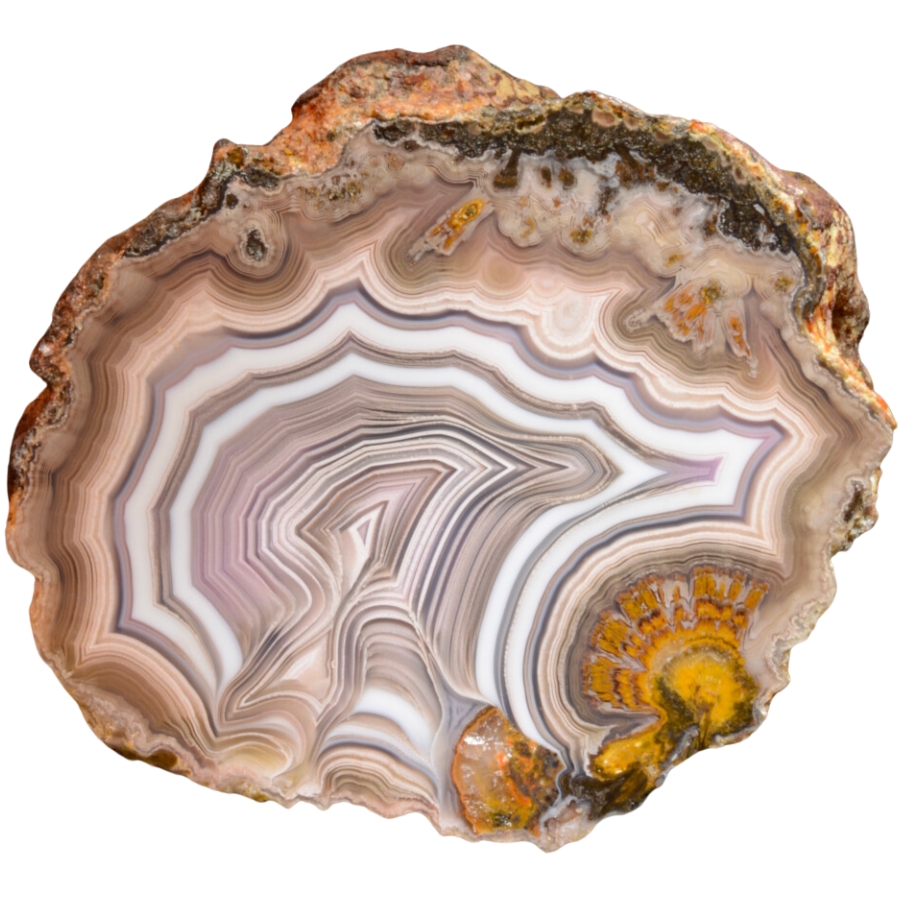
Laguna agate has incredibly sharp and fine banding. It has layers of red, orange, pink, yellow, and sometimes even purple and white all stacked in neat, tight bands.
These bands can form eye-catching patterns, like swirls, loops, and even landscapes.
The different colors of its bands come from various minerals present in the water at the time of its formation.
Laguna agate is considered one of the finest agates in the world due to its exceptional banding. This high regard among agate varieties makes it a prized possession for collectors.
Condor Agate
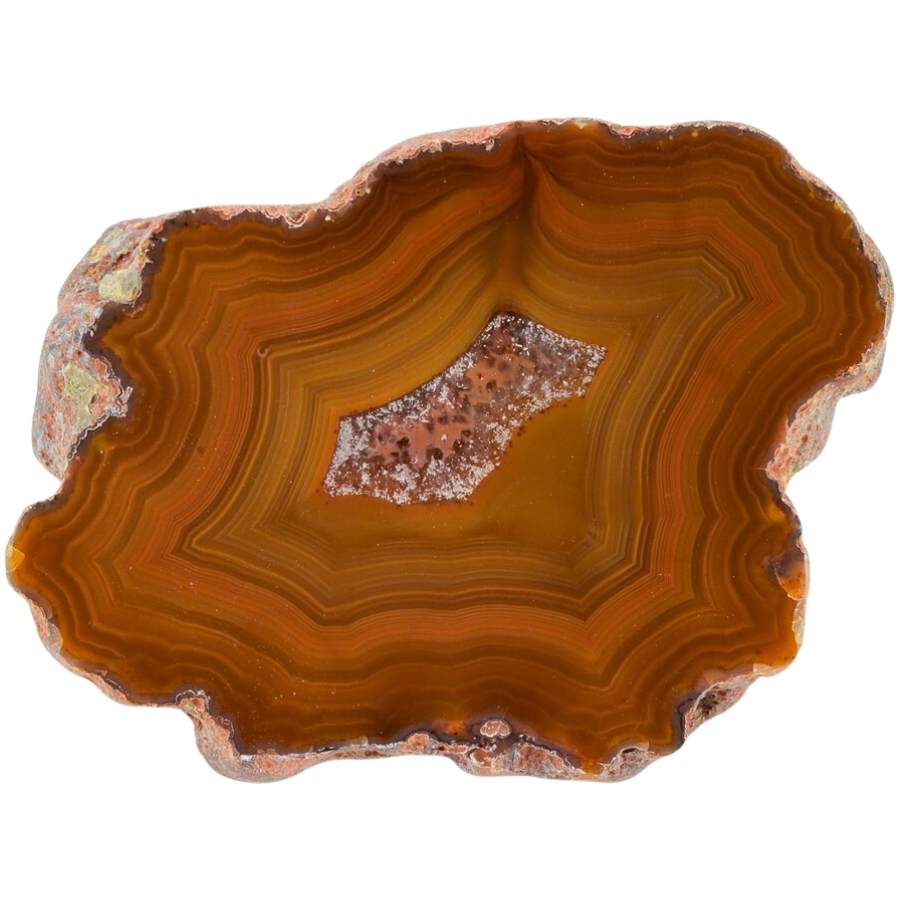
Condor agate is a real standout. It’s known for its bright, vivid colors and complex patterns.
It has reds, oranges, yellows, and sometimes even blues and greens all swirling together. These colors form in bands or in more random, artistic patterns.
The intensity and variety of its colors is what makes condor agate so special. It’s often used by artists and craftsmen who want to make a statement with their work.
Condor agate’s bold colors and patterns can turn a simple piece of jewelry or art into something really eye-catching.
Fortification Agate (Banded Agate)
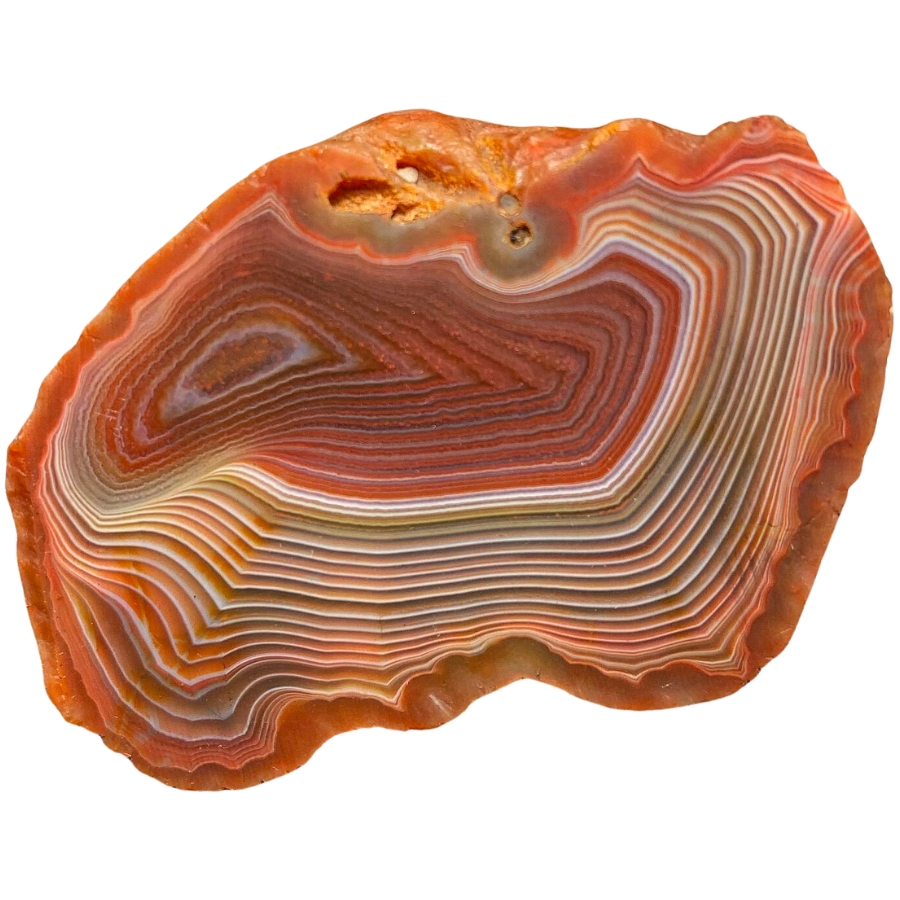
Fortification agate gets its name because the patterns inside it look like the aerial view of a fortified city.
Imagine seeing bands of color forming shapes that look like walls, with sharp angles and curves. They are usually in different colors, making each layer stand out.
If fortification agate is valuable, it’s because of its distinct patterns and colors. Its unique look makes it sought after for jewelry and as a collector’s item.
The clearer and more defined the patterns, the more valuable the stone can be. Some people also believe it can help with relaxation and calmness.
Iris Agate
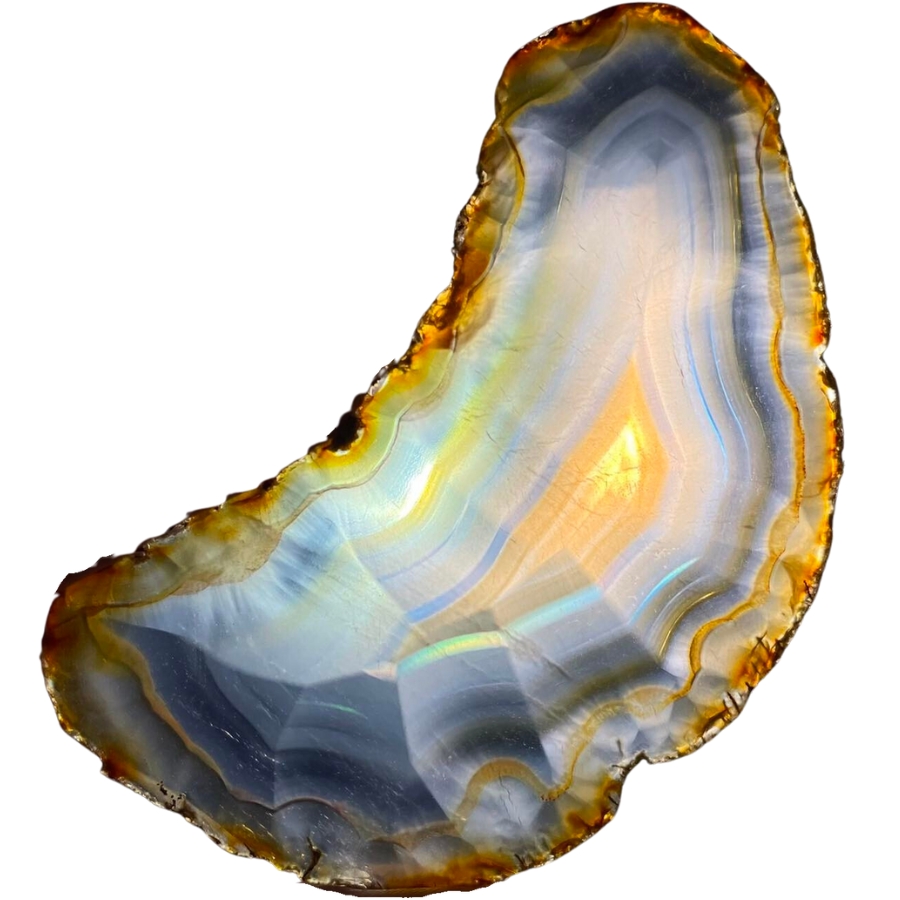
Iris agate looks like a regular agate at first, but when you hold it up to the light, something amazing happens. It shows all these rainbow colors, like light passing through a prism.
This is because it has very thin layers of silica, and when light hits these layers, it splits into all the colors of the rainbow.
The formation of iris agate is similar to other agates, but its layers are super thin, which is what creates the rainbow effect.
The value of iris agate comes from its unique ability to show these colors. In the past, people even used to think it had magical properties because of the way it showed colors. They saw it as a stone of good luck and wonder.
Plume Agate

Plume agate gets its name from its patterns that look like soft, feathery plumes. These plumes can be in all sorts of colors: red, black, green, or yellow, set against a translucent or opaque background.
The way these plumes seem to float in the stone makes it look like a frozen underwater scene or like feathers caught in a breeze.
The plumes are made of minerals like manganese or iron oxide, which get trapped in the silica during the agate’s formation and create the feathery patterns.
The price of plume agate can vary depending on how clear and intricate the patterns are. The more detailed and colorful the plumes, the more the stone is usually worth.
Picture Agate (Scenic Agate)
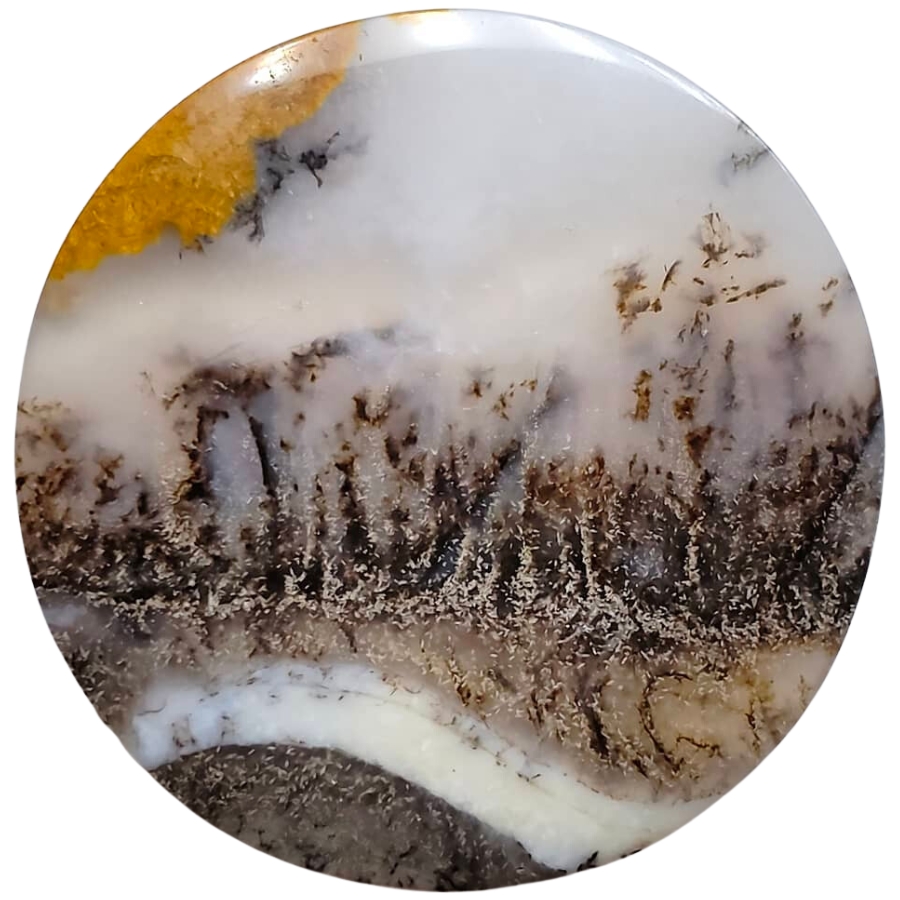
Picture agate is like a snapshot of nature captured in stone because it looks like it has pictures or scenes right inside it.
These “pictures” are actually natural patterns that resemble landscapes, mountains, trees, or even skies. They are usually in different shades of brown, white, and gray against a more translucent background.
The different patterns in picture agate or what’s also called scenic agate are made by various minerals in the water filled with silica that forms it.
If you’re thinking, “What is picture agate worth?“, its value comes from how distinct, clear, and detailed the natural “pictures” are.
Turritella Agate

Turritella agate is not your typical agate because it’s full of fossilized snail shells! The shells belong to a creature called Turritella, a type of sea snail.
These shells are tightly packed and create a pattern that looks like a bunch of tiny, swirling towers. The background of the agate is usually a dark, earthy color, which makes the white or cream-colored snail shells really pop.
Over millions of years, these snail shells got buried in sediment and eventually became fossilized. As time went on, silica-rich water flowed through the sediment, turning it into the agate we see today.
The value of turritella agate comes from its unique blend of geology and history. More than a pretty stone, it’s a piece of ancient life preserved in rock.
Fairburn Agate
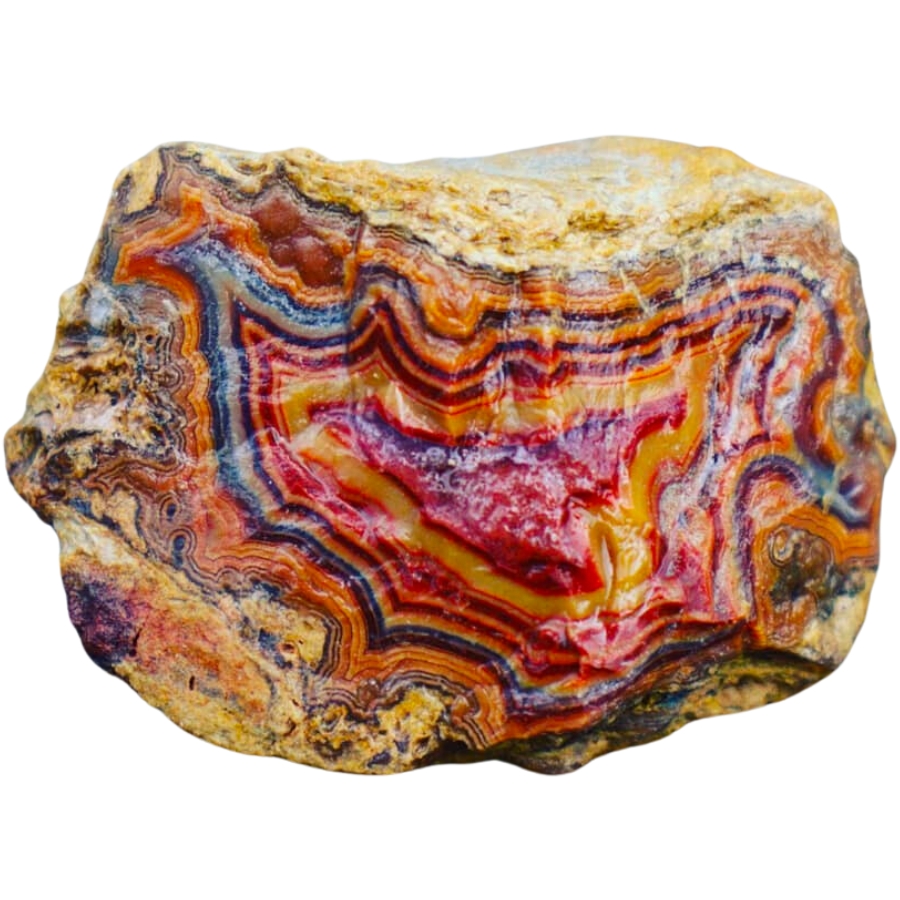
Known for its intricate patterns and bold colors, Fairburn agate is another fascinating type of agate. It usually has bands and swirls of different colors like red, yellow, orange, brown, and sometimes even pink or purple.
What’s special about these patterns is they often look like they’re in layers, creating a 3D effect. It’s like looking at a landscape made of stone.
It’s named after a place called Fairburn in South Dakota. This gives a clue about where it was first discovered.
People value Fairburn agate for the skill it takes to cut and polish it, which makes the patterns and colors really stand out.
Sagenite Agate
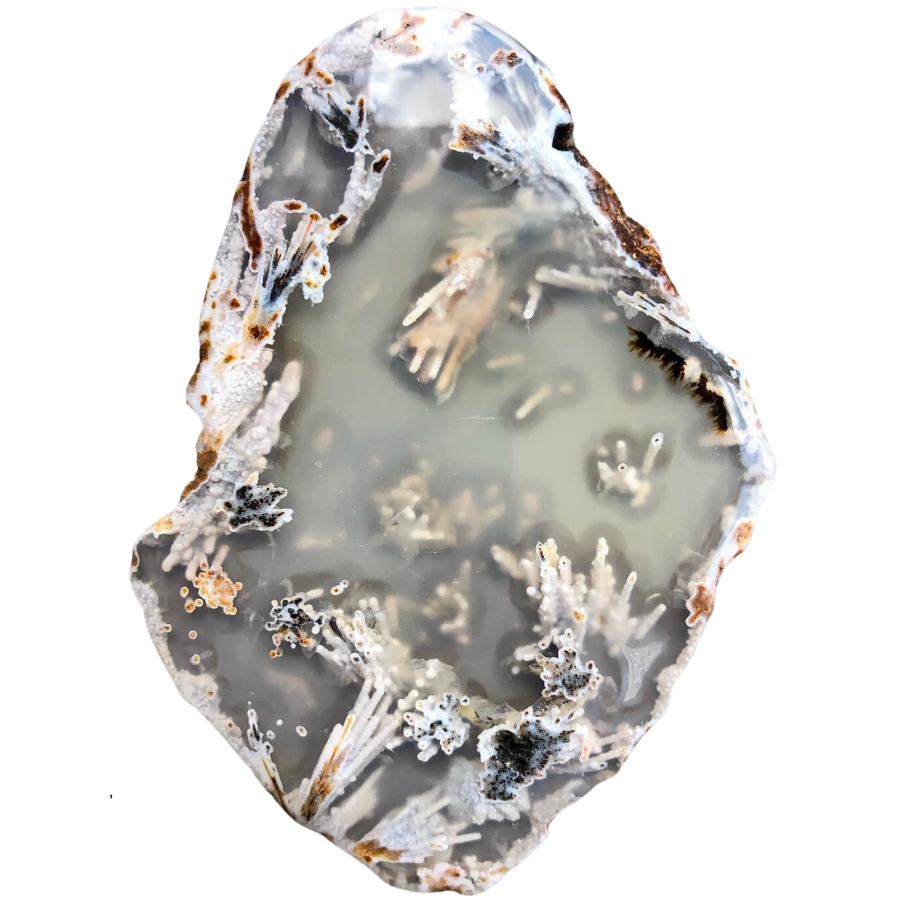
Sagenite agate has needle-like inclusions that look like tiny sprays of crystals inside it. They can be gold, silver, black, or even green, and they spread out in all directions, creating an amazing pattern.
The base of the agate is usually translucent, which lets you see these intricate needle patterns clearly.
These patterns are actually other minerals, like rutile or goethite, that get trapped inside the forming agate. These minerals grow in a crystal shape, looking like needles or hair.
Sagenite agate is often used in jewelry and other decorative items, with some people thinking that its needle patterns look like fireworks or starbursts.
Tree Agate
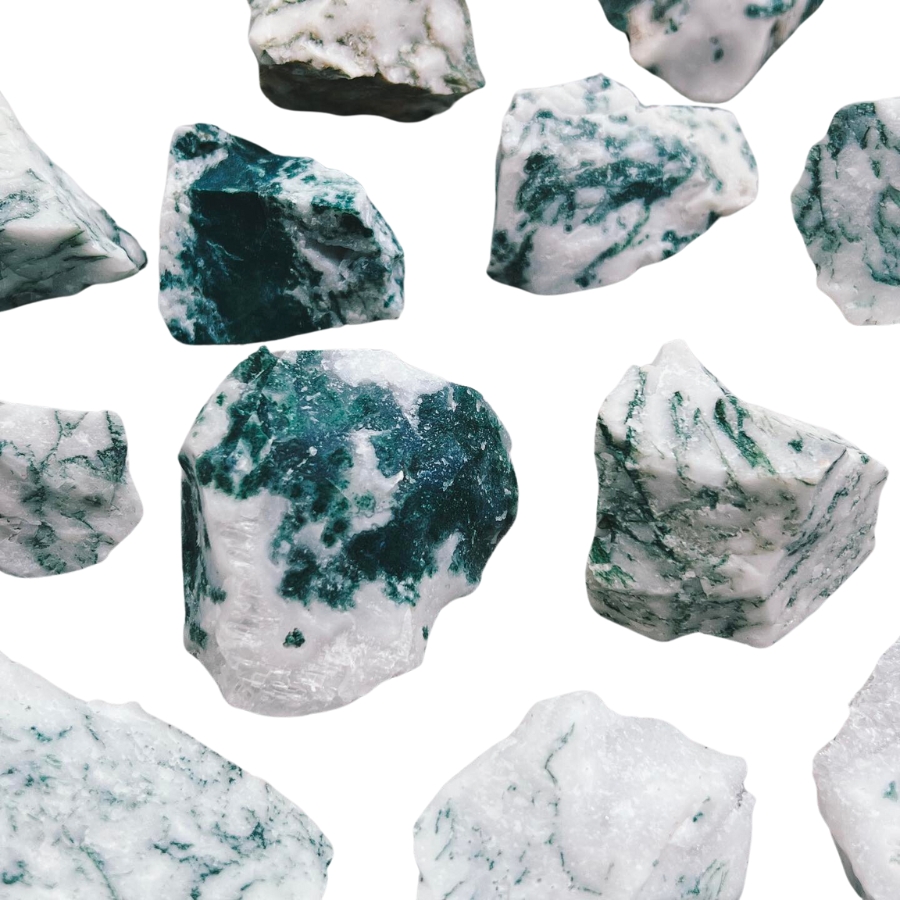
Tree agate, as its name suggests, looks like it’s got tiny trees or branches inside it. These tree-like patterns are usually green and spread out against a white or light gray background.
The green patterns aren’t actual trees, though. They’re made of minerals like chlorite or manganese.
Each piece of tree agate is different. You won’t find two that are exactly the same. It’s valued for its looks and it’s often used in jewelry and decorations.
The key factors in our recommendations are:
- The deep experience and understanding of our team about the area
- Recommendations from local groups and clubs
- How easy it is to get the a particular location
- Safety and potential hazards when collecting
- Weighing private and public locations
- The ability for both experienced and novice agate enthusiasts to find great samples
With these factors in mind we’ve been able to put together a fantastic list that just about anyone can use!
Kids. Beginners. Pros. Doesn’t matter. This book has become the go-to because it works for everyone.
Magy put it bluntly: “Identify rocks, crystals and minerals is so easy now!”
That’s not by accident, the photos are crisp, the callouts are simple, and the design is rugged enough to throw in a backpack without worrying. Whether it’s your first geode or your hundredth, this guide keeps the fun part simple: finding more treasures.
The Best Spots To Find Agates in Wyoming
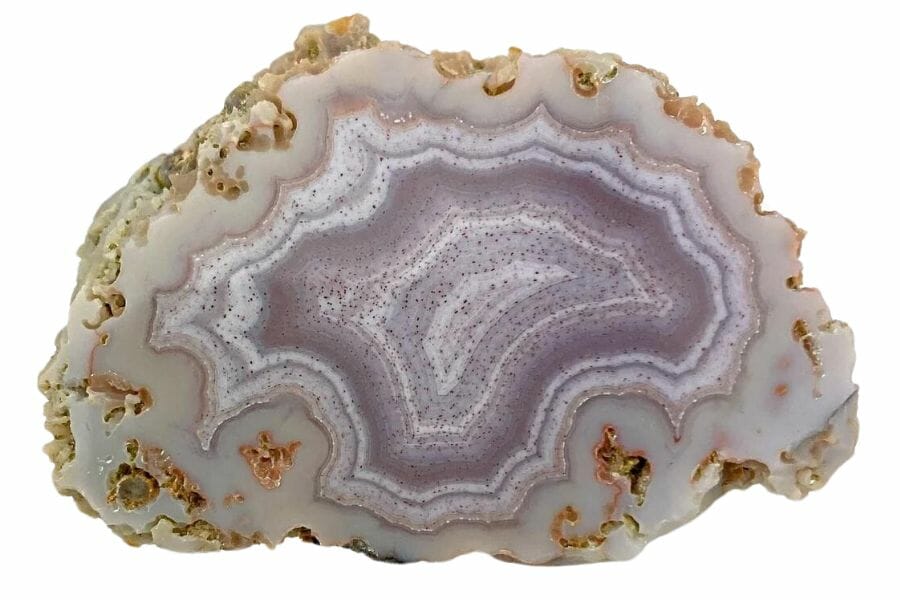
We wrote down where we think you can find agates in these fantastic locations in the state. There are many fun places to find gems in Wyoming, but not all have agates.
Always Confirm Access and Collection Rules!
Before heading out to any of the locations on our list you need to confirm access requirements and collection rules for both public and private locations directly with the location. We haven’t personally verified every location and the access requirements and collection rules often change without notice.
Many of the locations we mention will not allow collecting but are still great places for those who love to find beautiful rocks and minerals in the wild without keeping them. We also can’t guarantee you will find anything in these locations since they are constantly changing.
Always get updated information directly from the source ahead of time to ensure responsible rockhounding. If you want even more current options it’s always a good idea to contact local rock and mineral clubs and groups
Absaroka Mountains
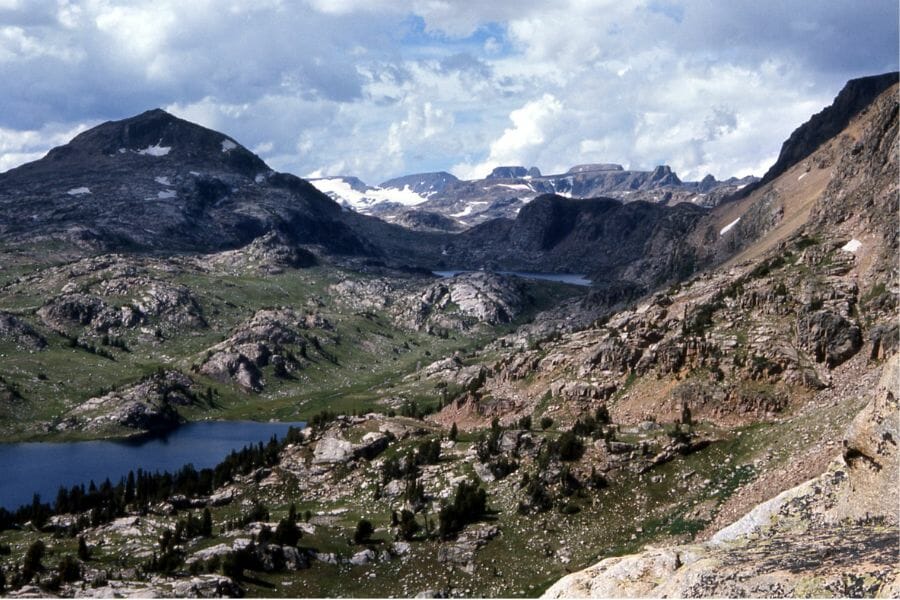
The Absaroka Mountains are a beautiful range in Wyoming. They are a part of the Rocky Mountains, stretch into Montana, and even touch Yellowstone National Park. The area’s unique geology, which includes a lot of volcanic activity, has made it the perfect place for agates to form.
This area has some of the most beautiful scenery in the American West. It has rough peaks, dense forests, and fast-moving rivers. Different kinds of rock in the location give rise to varying types of agate, from moss to Fairburn, each with its patterns and colors.
Where we found agates in the Absaroka Mountains
Focus on regions with a history of volcanic activity or where water has worn away at the surrounding rock, as these areas are more likely to expose agates. Stream beds, riverbanks, and gravel bars in rivers that flow through or near the Absaroka Mountains are good places to start your search.
Greybull River
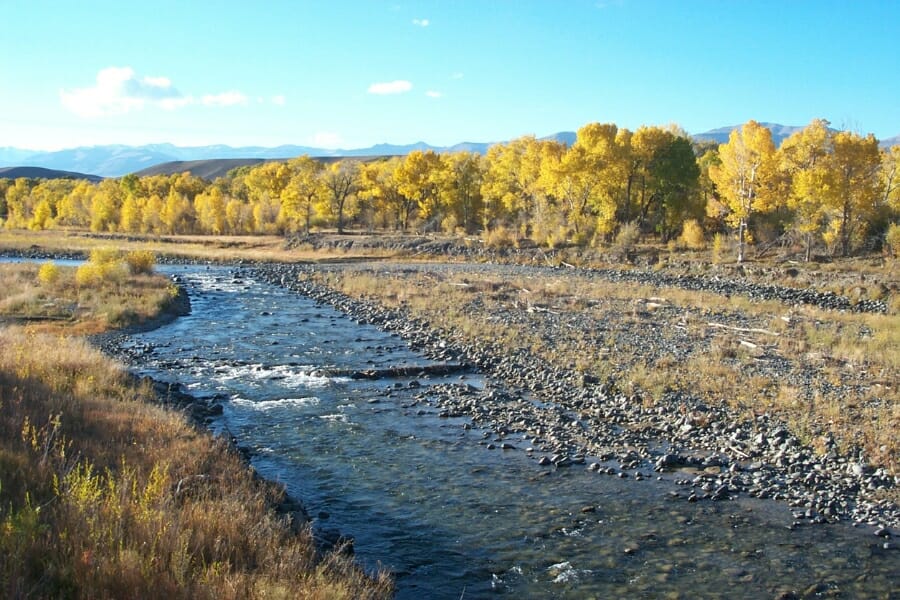
As it flows through the Bighorn Basin and the Absaroka Mountains in Wyoming, the Greybull River offers a mix of beautiful scenery and fascinating geology. The river starts in the high-altitude wilderness and flows through various landscapes, including forested slopes, open plains, and rocky outcrops.
This makes it a great place for people who like to be outside. The Greybull River is a great place to go if you want agates. Because the river flows through old volcanic land, there are a lot of agates, including moss and Fairburn types, on the gravel bars and along the riverbanks.
Where we found agates at Greybull River
The best place to look for these semiprecious stones is along the Greybull River’s gravel bars and riverbanks. Over time, the river’s eroding power has brought out many agates that were once hidden in the rocks around it.
Laramie Mountains

In Wyoming, the Laramie Mountains make a beautiful backdrop for many outdoor activities, like hiking, camping, fishing, and looking for wildlife. As a subrange of the Rocky Mountains, they run through southeastern Wyoming and into northern Colorado.
They have a lot of different types of rocks and geology. It’s a great place to look for agates, which is very exciting for people who like rocks. With sedimentary and metamorphic rock formations in their geological history, these mountains have the right conditions for different kinds of this exciting mineral.
Where we found agates at the Laramie Mountains
Places where water erosion has exposed older rock layers, are good places for agate hunters to look for these gems. Most of the time, creek beds, washouts, and even road cuts are good places to start looking.
Red Desert
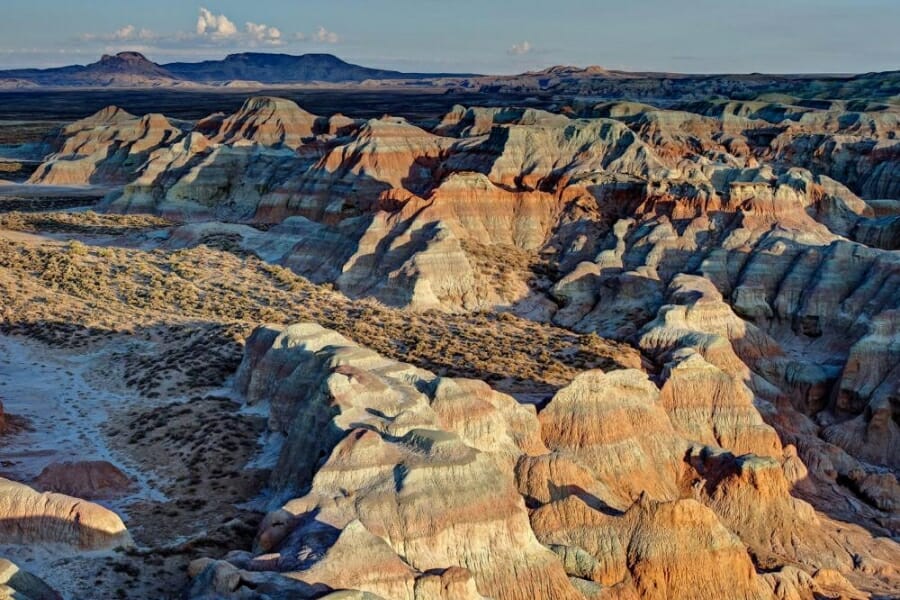
The Red Desert in Wyoming is a large, high-altitude basin with sagebrush and dunes spread over about 9,320 square miles. This area is known for its unique landscapes, such as the Killpecker Sand Dunes and the Great Divide Basin.
It has a stark beauty and is full of natural wonders. The area is a haven for many kinds of wildlife and an excellent place for geology fans, especially those who like to collect rocks. Agates, especially moss and banded agate, are some of the desert’s most interesting rocks.
Where we found agates in the Red Desert
Agates are often found in dry creek beds, washouts, and other places where erosion has exposed older rock layers. These are places where wind and water have worked together to bring out minerals, like agates, that were hidden.
Sage Hen Creek
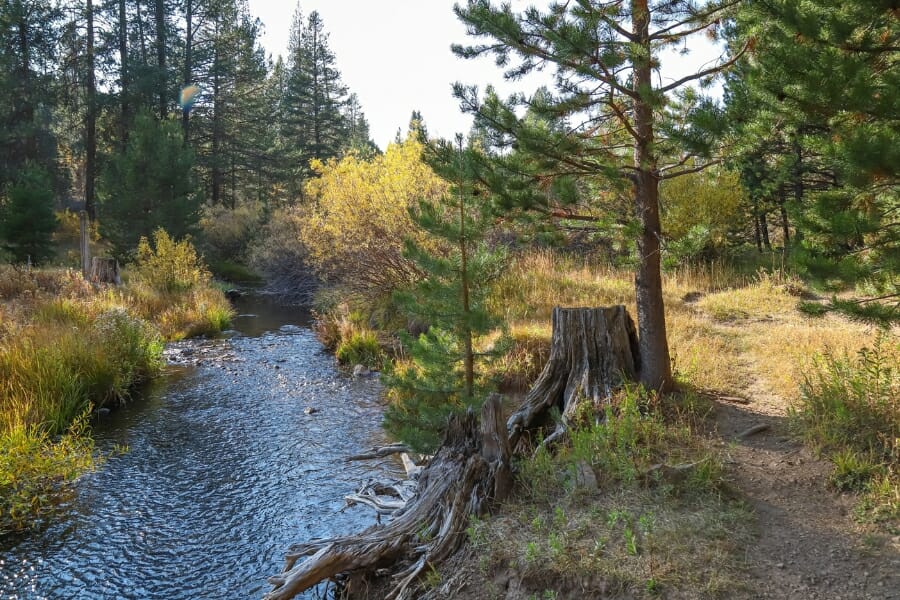
Sage Hen Creek is a hidden gem in the state. It flows through a beautiful landscape of open plains, rough hills, and dense sagebrush groves. This creek is in an area known for its wildlife and peaceful views.
The creek flows through many rock formations, including mineral-rich sedimentary layers perfect for agate growth. Over time, erosion from the water flow has moved these agates, which are now in the creek bed and on the sides of the creek.
Where we found agates at Sage Hen Creek
Agates are often found where erosion has worn away at older rock layers, revealing mineral-rich layers that were hidden before. In particular, the creek bed and the banks next to it are great places to start your search.
Other Great Places To Find Agates in Wyoming
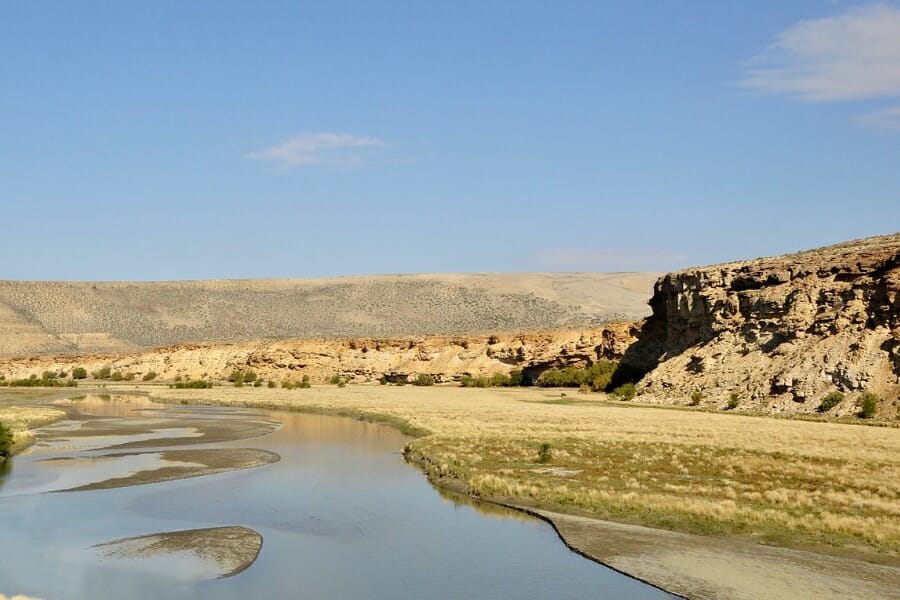
We’ve already told you where you should look for agates in Wyoming. We want you to find what you’re looking for, so we’ll give you more places in the state where you can look. We’ve listed them below by county:
Our recommendations by county
| County | Location |
| Big Horn | Area surfaces along the crest of Black Canyon of the Big Horn River |
| Converse | Moss Agate Hill area slopes and washes – Moss agate |
| Fremont | In gravels of Sweetwater River |
| Fremont | Long Creek |
| Fremont | Atlantic City-South Pass City, regional stream gravels, draws, washes, gullies, and hillsides |
| Fremont | Ft. Washakie, in broad area along both sides of US 287 |
| Fremont | Jeffery City, in Green Mountains at north side of Beaver Divide |
| Fremont | At county line and corner where Fremont, Natrona, and Carbon counties meet, all regional draws, washes, gravel |
| Fremont | Riverton area, gravel beds of the Wind River and its tributaries |
| Goshen | Jay Elm area, regional land surfaces, draws, washes, gravels |
| Johnson | Buffalo area, along both side of US 16 |
| Lincoln | All regional outcrops of the Green River |
| Lincoln | Kemmerer area, badlands region along the Green River |
| Natrona | Casper area quarries |
| Natrona | Gravels of Poison Spider Creek |
| Platte | Hartville area, regional draws, washes, and flats. |
| Sweetwater | All regional exposures of the Green River formation |
| Sweetwater | Granger area, in talus debris of buttes along the US 30 to Blacks Fork |
| Sweetwater | Green river area, along both sides of US 30 as far as Ft. Bridger in Uinta county |
| Sweetwater | Regional flats, draws, canyons of the Delaney Rim |
| Teton | Thorofare Wilderness area stream gravels |
| Uinta | Fort Bridger area, regional gravels |
| Washakie | Worland area, broad regional bench gravels and sides and bottoms of regional draws and washes |
Additional areas you can find agates
Here are a few more specific places where agates can be found. Because Wyoming is a big state, we want to help you find these.
Rivers and riverbanks
Rivers and riverbanks are a natural place for people to look for agates, which can lead to interesting geological discoveries. The erosion process is a big reason these places are great places to find agates.
Over time, the force of the water wears down the rocks around it, revealing hidden treasures like agates. When these stones move, they often end up on riverbanks and gravel beds, which are accessible for collectors to find.
Streams and creeks
For several reasons, streams and creeks are popular places for people looking for agates. The eroding power of moving water acts as a natural sieve, sorting through sediment and rock layers to reveal agates hiding underneath.
These waterways carry the loose gemstones and leave them in gravel bars, bends, and the edges of the stream or creek. This means that collectors can quickly look over the surface or dig a little below to find their prize in these smaller bodies of water.
Washes and ravines
Washes and ravines are natural ways for water to move, especially when it rains a lot or suddenly. This sporadic rush of water makes it easy to find geological treasures, making these places interesting for agate hunters.
The water slowly wears away the rock, revealing minerals that were once hidden. This often brings agates closer to the surface, where collectors can find them easier. Agates are often found in the sediment deposits that build up in the low points or turns of washes and ravines.
Common Agate-Hunting Questions
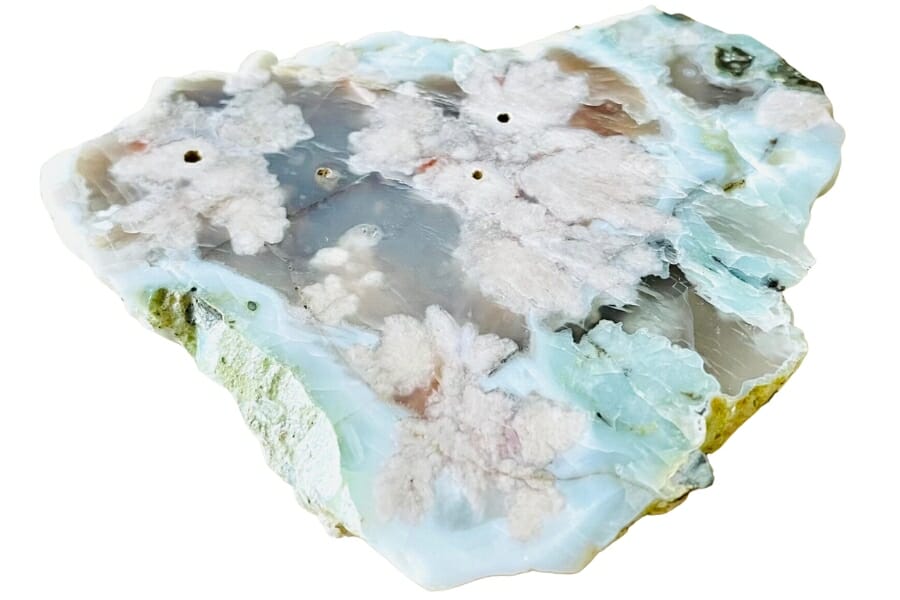
When people go to Wyoming to look for agates, they ask these questions most often.
Is it illegal to collect agate in Wyoming?
If you follow the rules, you can look for agates in Wyoming. Get permission to go into private land and take samples when you are there.
The Best Places To Buy Agates In Wyoming

Not everyone likes to spend a hot day hunting for agates outside. Sometimes, you only need one piece to add to your collection or give as a gift. Here are some Wyoming rock shops where agates are easy to find:
- Antares Minerals & Pottery – 431 Front St, Evanston, WY 82930, United States
- Avas Silver & Rock Shop – 631 Shoshoni St, Thermopolis, WY 82443, United States
- J L Gray Rock Shop – 614 3rd St, Big Piney, WY 83113, United States
- Star Valley Rock Shop – 300 Stockhorn, Thayne, WY 83127, United States
- Torrington Rock Shop – 4102 US-26 #85, Torrington, WY 82240, United States

